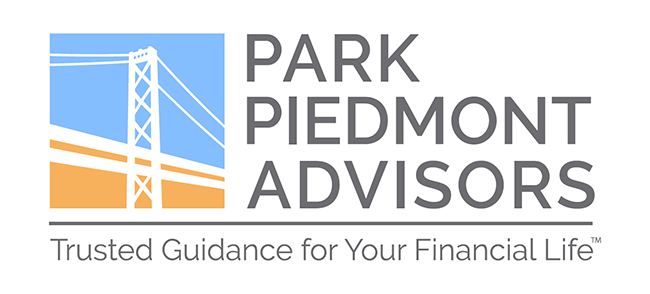The subject of the United States debt limit has been in the news, and we want to discuss both what it is and what it might mean for you as investors.
What is the debt limit?
The United States has for many years maintained a debt limit, which provides a ceiling for how much money the federal government can borrow to pay what it owes. (Note that the debt at issue refers to current and past expenses already approved by Congress; it does not consist of any new spending in the future.)
The U.S. actually reached that limit back in January, but the government – specially, the Department of the Treasury – has taken some “extraordinary measures” to extend the debt limit’s deadline.

As best we know (or the U.S. government knows), the current limit will last through at least early June, at which point, unless and until Congress raises or pauses the debt limit, the U.S. won’t have the cash on hand to pay all its obligations.
You may be asking yourself, haven’t we been here before? The answer is yes.
Over the years, Congress has increased the debt limit many times, typically without any political fanfare. That hasn’t always been the case, though.
For example, back in 2011, Congress increased the government’s borrowing capacity right before it nearly hit its borrowing limit. As a result, the credit rating agency Standard & Poor’s downgraded the country’s credit rating (from AAA to AA+), citing among other things the “political brinkmanship” resolved only at the final hour.
What the debt limit might mean for the economy
If Congress does not reach agreement on increasing the debt limit, the result would be an unprecedented U.S. debt default. There is a broad consensus that the economic impact would be negative, perhaps significantly so – in the form of higher financing costs, debt downgrades, greater market volatility, and likely other impacts no one can foresee.
“There is an enormous amount of uncertainty surrounding the damage the U.S. economy will incur if the U.S. government is unable to pay all its bills—it depends on how long the situation lasts, how it is managed, and the extent to which investors alter their views about the safety of U.S. Treasuries.
“An extended impasse is likely to cause significant damage to the U.S. economy. Even in a best-case scenario where the impasse is short-lived, the economy is likely to suffer sustained—and completely avoidable—damage” (Brookings, 4/24/23).
What the debt limit might mean for investors
The current political debate over the debt limit is not new. Such contentious debates have occurred over time and are very likely to recur in the years to come.
An important truth to remember is that markets are extremely efficient at digesting information. Today’s prices reflect both what is known and what market participants believe may happen in the future. So the continuing uncertainty of a looming debt default is largely if not fully already priced into financial markets.
Further, “country debt is generally a slow-moving variable. Market participants can have well-formed expectations about future debt levels and effects on publicly traded securities, expectations that should be reflected in current market prices” (Dimensional Fund Advisors, 12/6/21).
From Park Piedmont’s perspective, we feel it’s important to remind our readers that there is always going to be uncertainty, risk, and opportunity – in the world and in the financial markets. For our clients, we recommend a return to your first principles: your goals, your time horizon, and your risk tolerance.
When the unexpected happens, many investors feel like they should be doing something with their portfolios. Grim headlines and warnings of uncertainty and short-term volatility may set off alarm bells in your brain, shouting, “Do something! Anything!”
At those times – particularly at those times – it is important to maintain a focus on your important priorities, and especially to pay attention to your relevant timeline.

There is ample data that market timing is not an effective strategy. Remember that successful market timing requires that you get the timing right twice: when to get out of the market, and when to get back in.
Negative downturns and market volatility are undoubtedly disconcerting. But giving way to short-term feelings tends to defeat the benefits of long-term investing.
“The initial upsurge in prices from their lows often takes many investors by surprise, and they find it extraordinarily difficult to buy stocks that were available at sharply lower prices a few weeks earlier. … Add to this the likelihood of increased transaction costs and the potential tax consequences of a short-term trading strategy, and the odds of adding value through market timing grow even slimmer” (Dimensional Fund Advisors, 2/23/22).
Finally, and perhaps most importantly, we return to the importance of asset allocation and diversification. In the words of Nobel laureate Merton Miller, “Diversification is your buddy.”
The choice of investments and the allocation to different asset classes in your investment portfolio should be based on each investor’s risk tolerance and goals.
It should not be influenced by trying to predict the direction of future price changes for these investments, or by reacting to actual price changes by selling the investments that are declining. Or, on the flip side, by buying investments that have experienced recent gains.
While diversification through asset allocation cannot insulate investors from all risk, it is an important tool to cushion market volatility and help all of us withstand the lures of short-term decision-making.
If you have any questions or concerns – about the debt limit deliberations or any other topics – please reach out to your Park Piedmont advisor. We are here to be a resource and sounding board and are happy to talk.
—
Read “What the Debt Limit Might Mean for Investors” in the Piedmont Exedra.
